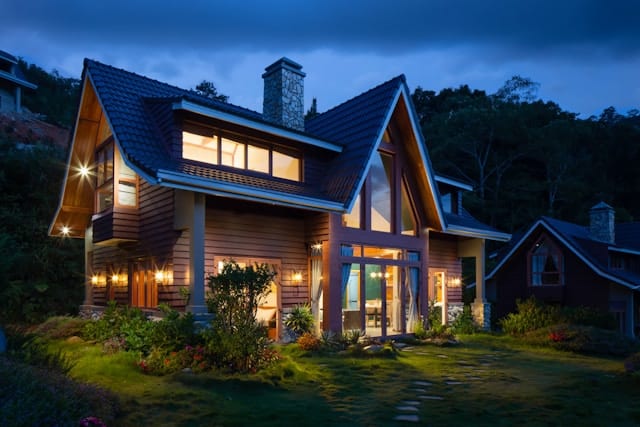How to Integrate Smart Home Technology in a Home with Historical Features?

As we continue to embrace the digital age, smart home technologies have become an essential part of our daily lives. Whether it’s for convenience, security, or energy efficiency, these devices and systems have fundamentally altered the way we interact with our homes. However, integrating smart home technology into houses with traditional and historical features can be a challenge. These homes often carry with them unique architectural elements that can be a bit daunting when considering modern upgrades. However, with careful planning, it is entirely possible to bring such homes into the 21st century while preserving their charm and character.
Embracing the Smart Home Design
Before you dive headfirst into the smart home revolution, it’s essential to start with a well-thought-out design. The key is to find a balance between maintaining the historical integrity of your house and adding modern, functional technologies.
Dans le meme genre : How to Optimize a Small Bathroom to Include Laundry Features Without Clutter?
Begin by identifying the technologies you want to incorporate. These could range from home automation systems, smart lighting, energy-efficient devices, to state-of-the-art security systems. Choose devices that match the aesthetic of your home. Many manufacturers now offer products with a vintage design that blends seamlessly with older interiors.
Remember, the goal isn’t to make your historic home look futuristic but to enhance its functionality with modern technology. Hence, choose systems that can be easily integrated without causing disruption to the architectural features of the home. Wi-Fi enabled devices, for example, require minimal installation and offer maximum convenience.
Avez-vous vu cela : What’s the Most Effective Layout for a Vegetable Garden in a Shady Backyard?
Navigating the Internet of Things
The Internet of Things (IoT) has become a cornerstone of smart home technologies. These systems rely on a network of interconnected devices, all communicating and collaborating to provide you with a seamless user experience. In embracing IoT, you can look forward to controlling your home’s lighting, security systems, and energy use from your smartphone or voice commands to your Google Home device.
However, houses with historical features pose unique challenges. Wi-Fi signals can be difficult to propagate in houses with thick, stone walls or large metal structures. Therefore, deploying a mesh network system can help ensure comprehensive coverage throughout the property, enabling your smart devices to function optimally.
Remember, reliable internet connectivity is the backbone of your smart home system. So, it’s critical to ensure a robust and stable internet connection to enjoy the benefits of home automation and control.
Mastering Home Automation
Home automation is the real power of smart home technology. This is where all your devices and systems come together to work in harmony, providing you with convenience, security, and energy efficiency. With home automation, you can program your lighting to mimic sunrise in the morning, or your heating to kick in just as you’re coming home.
When integrating home automation into a house with historical features, wireless systems are your best bet. These systems require minimal installation, meaning you don’t have to worry about drilling holes into your precious antique woodwork or plaster.
Another aspect to consider is the user interface of your control system. A well-designed user interface is intuitive and easy to use, allowing you to control your home without any tech headaches. Hence, consider systems that offer a user-friendly design, preferably with voice control capabilities.
Enhancing Home Security with Smart Devices
When it comes to home security, smart technology offers a wealth of options. From smart locks and security cameras to alarm systems and door sensors, these devices provide an added layer of protection to your home.
When integrating these technologies into a historic home, wireless systems are again the best choice. Wireless security devices require minimal invasive installation, preserving the integrity of your home’s design.
Moreover, features like remote monitoring allow you to keep an eye on your property no matter where you are. So, you can have peace of mind knowing your home is secure at all times.
Conserving Energy with Smart Technologies
The incorporation of smart technologies can also lead to significant energy savings. With smart thermostats, you can optimize your heating and cooling based on your daily habits and preferences. Likewise, smart lighting allows you to control lights remotely, ensuring no energy is wasted.
In homes with historical features, energy conservation is crucial. Many of these houses were not built with energy efficiency in mind. Therefore, smart devices can be a great way to reduce your energy footprint without compromising the home’s authentic design.
Remember, smart home technology is not about transforming your home into something out of a science fiction movie. It is about harnessing the power of modern technology to improve your quality of life while honoring and preserving the history and charm that make your house a home.
Streamlining Smart Home Setup with Professional Help
Engaging professionals in the setup process can make integrating smart home technology in historical homes significantly smoother. Many real estate and home design experts now specialize in this niche area, understanding the delicate balance between preserving historical charm and incorporating modern conveniences.
These experts typically begin by evaluating the property, assessing its architectural features, and identifying potential challenges. This assessment forms the basis of the design plan that outlines where and how the home devices will be installed.
Seeking professional help can also be particularly beneficial when setting up home automation. These experts can help configure your home systems to fit your lifestyle and preferences, from adjusting smart lighting settings to programming your Google home device for personalized, voice-activated commands. They can also assist in creating a user-friendly setup that even the least tech-savvy household members can effortlessly use.
Remember, while smart home systems offer plug-and-play convenience, integrating them in a house with historical features requires a nuanced approach. With professional help, you can avoid costly mistakes, save time, and ensure that your smart home setup enhances the functionality and energy efficiency of your home without compromising its historic charm.
Conclusion
Incorporating smart home technology into a home with historical features is no easy feat. However, careful planning, a keen eye for design, and a sound understanding of the Internet of Things and various home devices can make the process smoother. Remember to choose wireless systems for minimal disruption to your home’s architectural features, prioritize energy efficiency through smart thermostats and lighting, and enhance home security with smart security devices.
If the task seems daunting, don’t hesitate to seek help from professionals who specialize in integrating smart technology in historical homes. With their expertise, you can ensure a seamless blend of old-world charm and modern convenience.
Ultimately, integrating smart home technologies into your historic home is about enhancing your living experience. It’s about creating an environment that embraces the convenience of modern life without sacrificing the unique character and charm that make your home special. So, as you step into the world of smart homes, keep in mind: your home’s history doesn’t have to be a barrier to its future.
